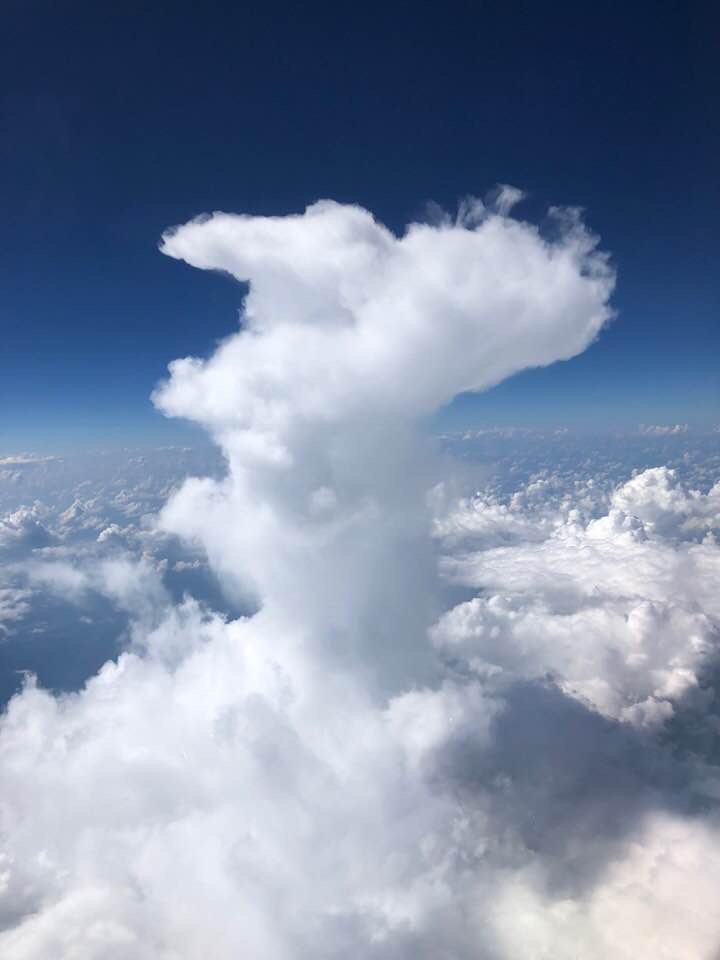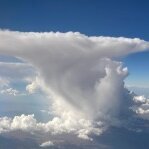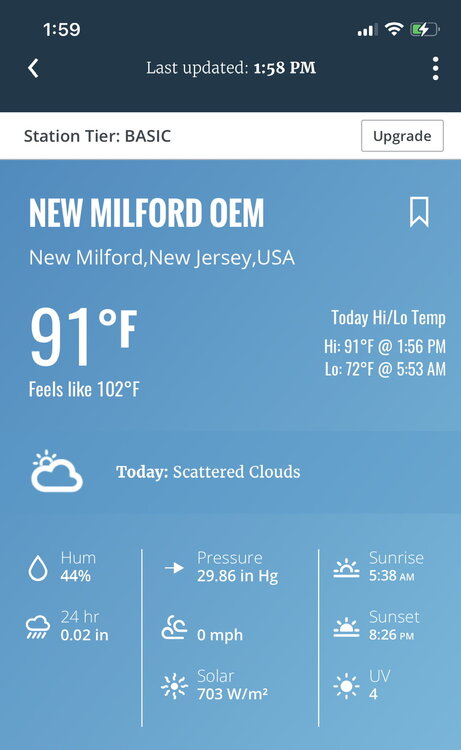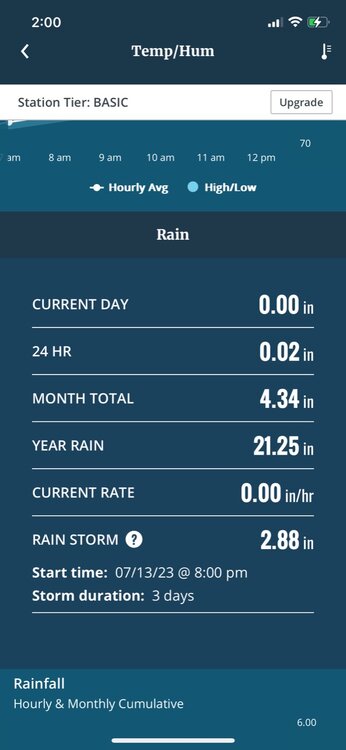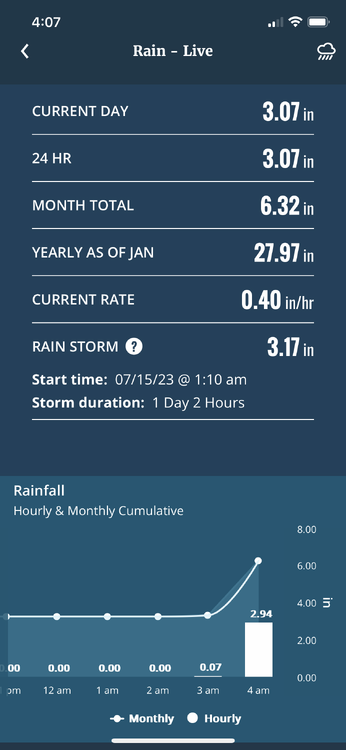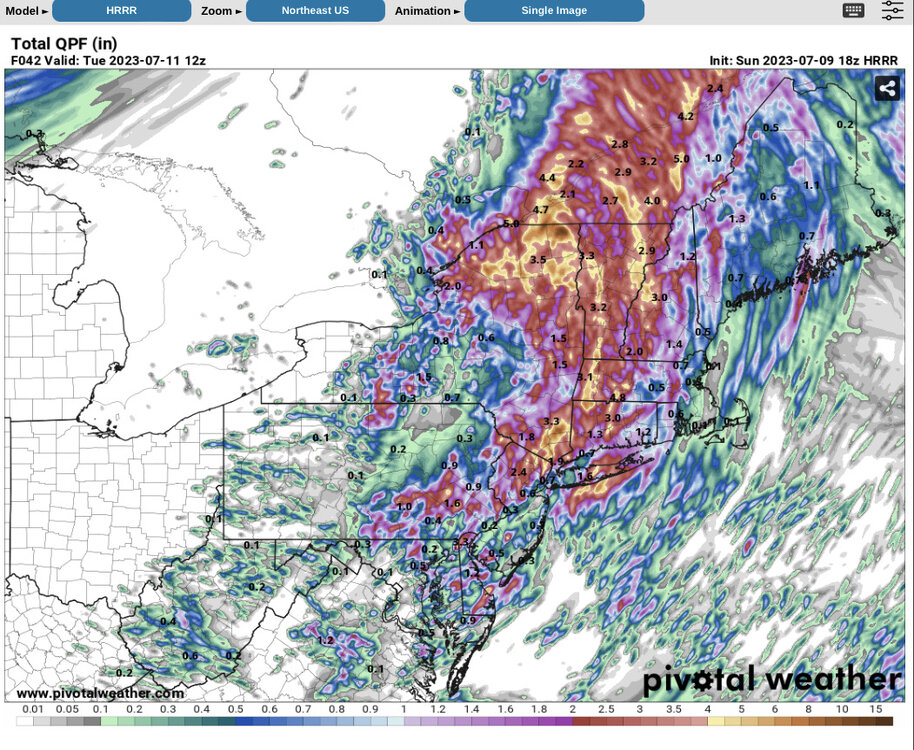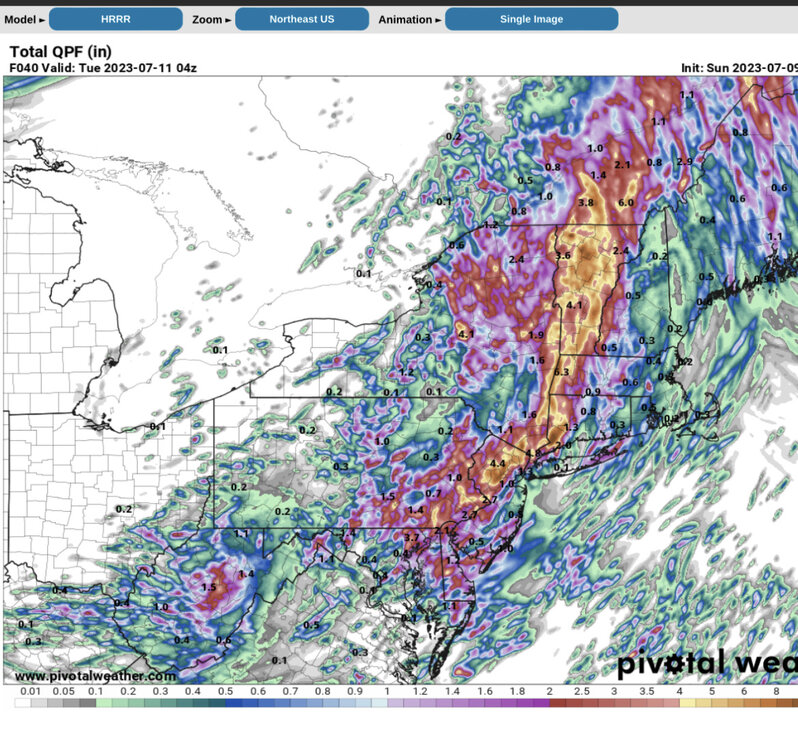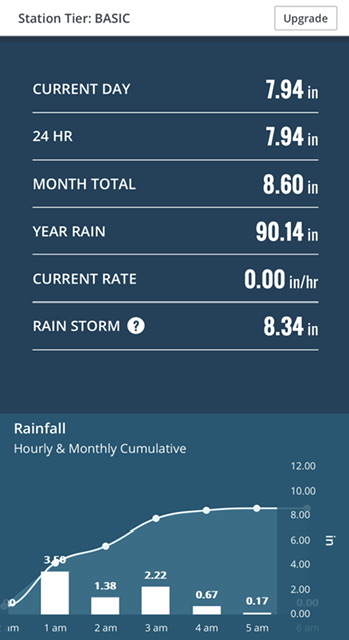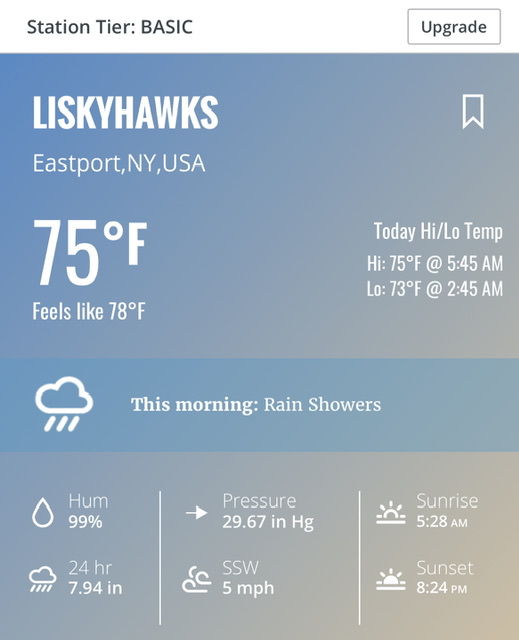-
Posts
2,423 -
Joined
-
Last visited
Content Type
Profiles
Blogs
Forums
American Weather
Media Demo
Store
Gallery
Everything posted by Tatamy
-
Had a gust to 35 mph at my station located at Cherry Grove. 0.12” in the rain gauge. These cells are moving much too quick to put down any significant amounts of rain in most places. Multiple reports of wind gusts to 40 mph + in Fire Island Pines.
-
Favorable atmospheric conditions and terrain factors.
-
Some real nasty lightning with these storms out here in the Lehigh Valley. Lots of CTC and CTG lightning with them.
-
Line has passed through here. Nothing out of the ordinary. 0.33” collected in the rain gauge. About an hour’s worth of CTC that I actually slept through. Highest wind gust 16 mph. Yawn.
-
Mt. Holly issues severe thunderstorm watch for all of its PA counties.
-
Timing of this feature looks to be 1:30 - 2:00 AM for when it reaches NW NJ and Warren Cty.
-
Steady rain on Fire Island the past couple of hours. 0.23”
-
Thank goodness for that sea breeze front.
-
This is from a Davis station situated in New Milford which had 2.88”. Nearby stations with that network had between 3 - 4”
-
Crazy gradient as usual with these events. My station on Fire Island (Cherry Grove) has 0.17” so far today. Nearby stations to there are the same.
-
74/70. Rain missed me in all directions today.
-
Sea breeze front has been fairly active today right along the north shore particularly in Suffolk Cty.
-
Outflow boundary from the earlier convection over the LHV has dropped south through the NYC metro area and is helping to set off new storms over the boroughs and nearby NJ.
-
-
-
There were training cells in that area. My station on Fire Island has a storm total of 1.48” so I may have caught the NW edge of that band out there.
-
-
I saw that cell on radar earlier this morning just before 4:00 AM. It was very clearly rotating. Let’s see if there are any damage reports.
-
Radar is getting / still busy at some places around the area including LI. My station on Fire Island has recorded 1.07” since midnight.
-
-
My Storm total is up to 2.00”
-
My total on the day is up to 0.70”
-
As the trough axis moves east there will definitely be a pick up in the activity in NJ, SE NY, and in close to the city.

